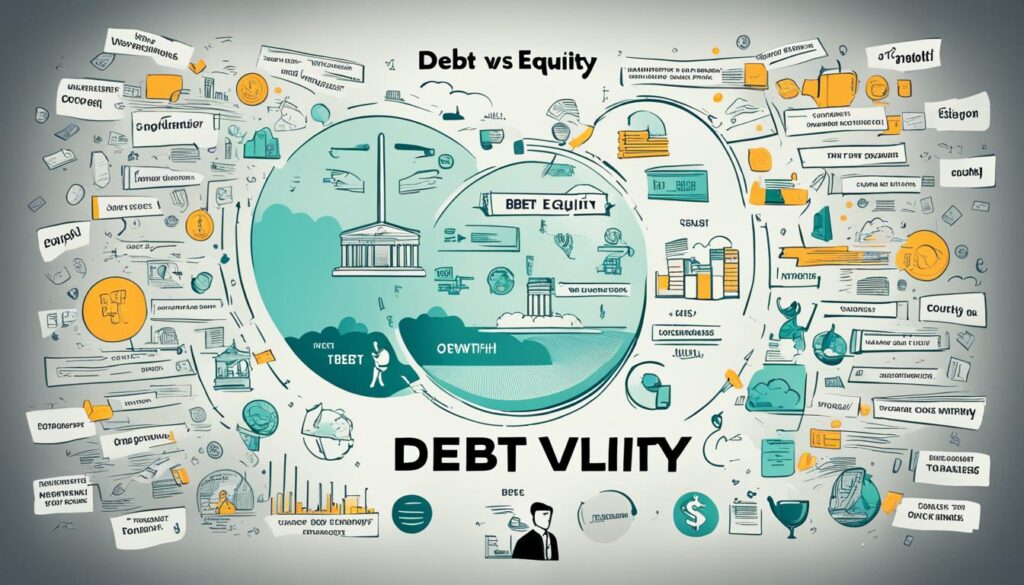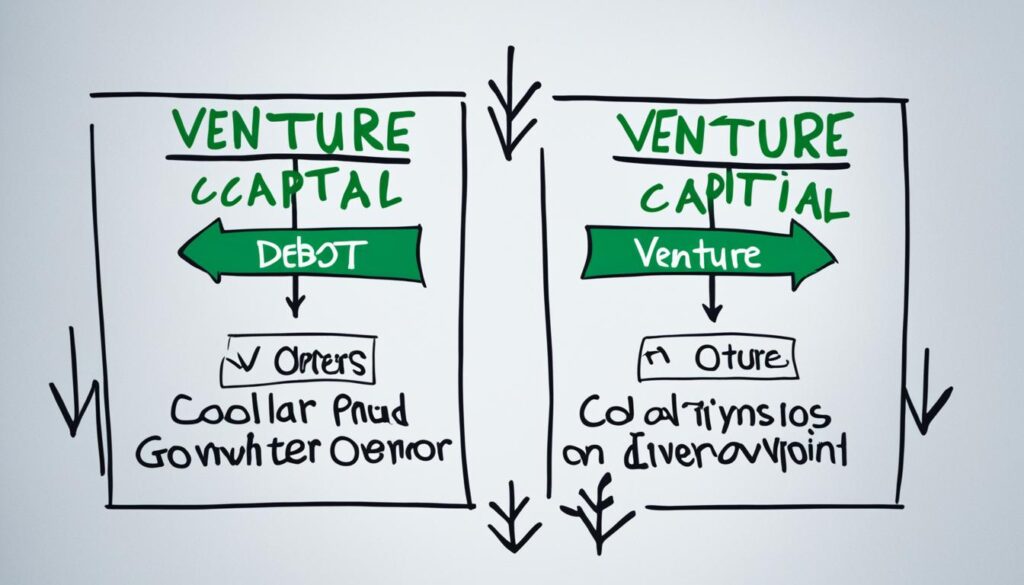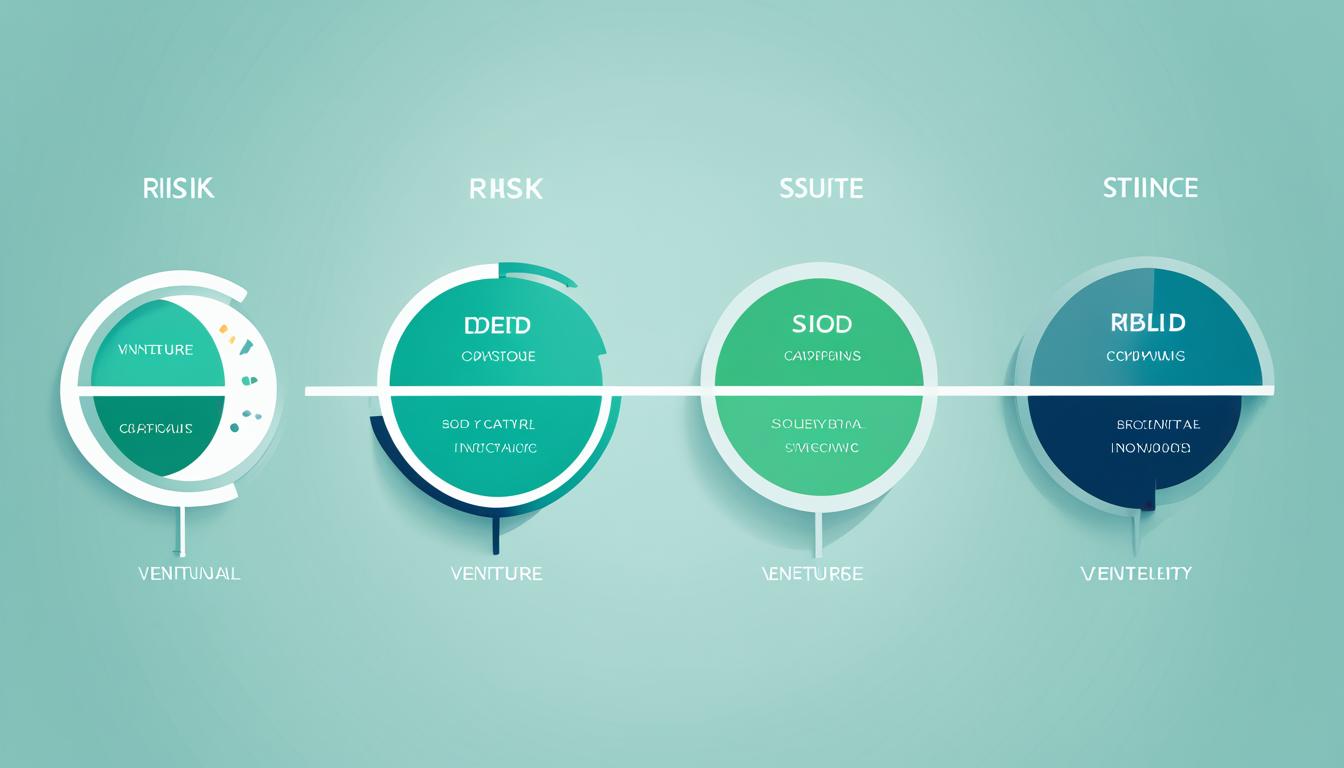In the dynamic world of financing for startups and high-growth companies, the debate around venture capital and venture debt continues to spark intriguing questions. While most people associate venture capital with equity investments, the role of debt financing in the venture capital ecosystem is often overlooked. But the real question is, do VC firms actually use debt to fund their investments and operations?
The answer may surprise you. According to the factual data from our sources, VC firms do, in fact, use debt financing to support their investments and operations, although it is less common than their equity-based approach. Venture debt is a specialized form of loan financing that is designed specifically for venture-backed companies, and it plays a valuable role in the overall venture financing landscape.
In this article, we’ll dive deep into the intricacies of venture debt, exploring how it complements venture capital and the unique ways VC firms leverage it to fuel the growth of their portfolio companies. As we uncover the insights, we’ll unravel the myths and shed light on the strategic role of debt financing in the world of venture capital.
Key Takeaways
- VC firms do use debt financing, primarily in the form of venture debt, to complement their equity investments.
- Venture debt provides additional capital to support growth and operations without diluting the founders’ ownership stake.
- Venture debt is more forward-looking than traditional bank loans, as lenders underwrite based on the company’s potential for growth.
- Venture debt is typically used by VC-backed companies to fund specific growth initiatives or bridge the gap until the next equity round.
- Understanding the differences between venture capital and venture debt is crucial for entrepreneurs seeking the right financing strategy for their business.
The Role of Debt vs. Equity in Venture Financing
Venture capital and debt financing are both critical components of the modern startup ecosystem, each offering unique advantages and trade-offs for entrepreneurs seeking to fund their companies’ growth. Understanding the nuances of these two financing options is crucial for founders navigating the complex world of venture financing.
Understanding Equity Financing
Equity financing, such as venture capital, involves venture capitalists investing in a company in exchange for an ownership stake. This provides the company with much-needed capital to fund its growth, but it also results in the dilution of the founders’ ownership. Venture capital is a popular financing option for new, high-growth companies, as it allows them to access capital without the requirement of repaying a loan.
Debt Financing: Characteristics and Limitations
Debt financing, on the other hand, involves a loan that must be repaid, with the lender typically taking some form of collateral or security interest in the company’s assets. Debt financing, such as venture debt, has several key characteristics that distinguish it from equity financing. Debt financing typically involves a defined repayment schedule, with the company making regular payments of principal and interest. Debt financing also often includes financial covenants, which are agreements between the borrower and lender that outline certain criteria the company must meet to maintain the loan. However, debt financing also has limitations, as it can only be used for certain predefined business objectives and requires the company to generate sufficient cash flow to make the required loan payments.
Debt financing can be a useful complement to equity financing, as it allows companies to access additional capital without further diluting the founders’ ownership. By understanding the differences between these two financing options, entrepreneurs can make informed decisions about the best approach to fuel their company’s growth.

The First Rule of Venture Debt
The first rule of venture debt is that it follows equity financing, not replacing it. Venture lenders use the company’s existing venture capital backing as a validation and the primary basis for underwriting a loan. Raising venture debt is more efficient when the company can clearly describe the performance objectives associated with the last equity round, the intended timing and strategy for the next equity round, and how the venture debt loan will support or supplement those plans.
Venture Debt Follows Equity
Venture debt is designed to complement a company’s equity financing, not to replace it. Lenders rely on the validation and momentum created by the company’s previous venture capital raises as a key factor in their underwriting process. By aligning the venture debt with the company’s equity financing strategy, startups can access additional growth capital without significantly diluting their ownership.
Debt Availability and Terms
The availability and terms of venture debt can vary significantly based on the scale of the business, the quality and quantity of equity financing raised to date, and the specific purpose for which the debt is being raised. Typically, the amount of venture debt available is calibrated to the amount of equity the company has raised, with loan sizes ranging from 25% to 35% of the most recent equity round. Early-stage companies with pre-revenue or limited product validation typically have access to much smaller venture debt loans than later-stage companies in expansion mode. Companies without venture capital backing often face significant difficulties in attracting any venture debt.

Do VC firms use debt?
The factual data indicates that VC firms do, in fact, use debt financing to fund investments or operations, although it is less common than equity financing. Venture debt is a type of loan offered by banks and non-bank lenders that is designed specifically for early-stage, high-growth companies with venture capital backing. The vast majority of venture-backed companies raise venture debt at some point in their lives from specialized banks such as Silicon Valley Bank. Venture debt is typically used by VC-backed companies to complement their equity financing, providing additional capital to support growth and operations without diluting the founders’ ownership stake.
| Venture Capital | Venture Debt |
|---|---|
| Equity investment in startups | Loans with warrants |
| Provides capital for growth | Allows access to additional capital without dilution |
| Results in dilution of founders’ ownership | Aligns interests of lender and borrower |
“The vast majority of venture-backed companies raise venture debt at some point in their lives from specialized banks such as Silicon Valley Bank.”
By understanding the key differences between venture capital and venture debt, entrepreneurs can make informed decisions about the best financing strategy for their business.

The Players in the Venture Debt Market
Silicon Valley Bank has been a pioneer in the venture debt market, offering loan products and financial advice tailored to the specific needs of startups and high-growth companies. As a bank based in Silicon Valley, it has evolved from the ground up to serve the innovation economy in the region, setting it apart from many other banks that may not truly understand the unique characteristics of venture-backed companies.
Banks vs. Non-Bank Lenders
In addition to banks like Silicon Valley Bank, there are also non-bank lenders that participate in the venture debt market. These non-bank lenders may have different lending criteria, pricing, and terms compared to traditional banks. Some key differences between banks and non-bank lenders in the venture debt space include the emphasis on financial covenants and structure versus yield, the limitations on maximum loan size, and the legal remedies available to the lender in the event of a borrower default. Regardless of the specific lender, venture debt is typically secured by the company’s assets, and the relationship between the borrower and lender is often an ongoing, long-term partnership.

How Lenders Evaluate Venture Debt Opportunities
Venture debt lenders closely examine a company’s ability to raise additional equity capital as a key factor in underwriting the loan. They want to see that the company has a clear plan and timeline for its next round of equity financing, as the lender’s primary source of repayment is the company’s capacity to access more equity capital. Lenders will closely monitor the company’s burn rate and liquidity to determine the available runway before the next equity round is needed.
Performance Metrics and Milestones
Venture debt lenders also closely examine the company’s performance metrics and the milestones associated with the last equity round. They want to understand which metrics will influence the valuation and terms of the next equity round, as well as the level of performance that correlates to the company’s ability to access non-dilutive capital. Lenders use this information to assess the company’s likelihood of achieving the necessary milestones to secure the next round of financing, which is a critical factor in their underwriting decision.
Runway and Liquidity Management
In addition to the company’s performance metrics and access to additional equity capital, venture debt lenders also focus on the company’s runway and liquidity management. They want to ensure that the company has enough momentum and liquidity to achieve the necessary milestones for the next financing round. Companies that can demonstrate a clear path to reaching these milestones are more likely to attract non-dilutive term sheets from outside investors, while those with a shortfall in either category may struggle to secure new funding and may have to resort to a potentially dilutive, inside-led round.

Negotiation Tactics for Venture Debt
The Value of Reputation and Long-Term Relationships
The value of reputation is paramount in the venture debt market, as the venture capital industry is highly relationship-driven. Most VC-backed companies progress through a series of equity and debt financings, making it a multi-turn game. In negotiating each round of venture debt, as with equity financing, there is a tension between getting the best deal terms and securing the best relationship partner. The desire to optimize every term in every loan should be balanced against the benefit of partnering with a lender who may provide greater strategic or performance flexibility over the long term.
Reputation and long-term relationships are especially crucial in the venture debt space, where specialized lenders like Silicon Valley Bank have a deep understanding of the unique needs and challenges facing VC-backed companies. By cultivating strong partnerships with these lenders, companies can gain access to valuable guidance and support that extends beyond the initial loan agreement.
Ultimately, the most successful venture debt negotiations strike a careful balance between optimizing short-term deal terms and fostering lasting, collaborative relationships with lenders who are invested in the long-term success of the business.
Venture Capital vs. Venture Debt: Key Differences
When it comes to financing options for startups and high-growth companies, venture capital and venture debt represent two distinct paths. Understanding the key differences between these financing methods can help entrepreneurs make informed decisions about the best approach for their business.
Venture Capital: Equity Investments in Startups
Venture capital involves venture capitalists investing in a company in exchange for an ownership stake. This provides the company with capital to fund its growth, but it also results in dilution of the founders’ ownership. Venture capital is a popular financing option for new, high-growth companies, as it allows them to access capital without the requirement of repaying a loan.
Venture Debt: Loans with Warrants
Venture debt, on the other hand, is a loan that must be repaid. Venture debt lenders may also receive warrants, which are legal documents that allow the lender to purchase an equity stake in the company at a future date. This helps to align the interests of the lender and the borrower, as both parties are focused on the long-term success of the business. Venture debt is typically used by companies with strong revenue performance and proven customer bases to complement their equity financing.

When to Choose Venture Debt Over Venture Capital
One of the key advantages of venture debt over venture capital is the lower cost of capital. Venture debt typically works out to be a lower-cost financing option, as it reduces the existing shareholders’ dilution in their equity interests. While venture debt must be repaid, it allows the company to access the capital it needs to finance expansion without selling a significant portion of the equity in the company.
Lower Cost of Capital
Venture debt provides a more cost-effective way for companies to raise growth capital compared to traditional venture capital. By utilizing debt financing, companies can access the funds they require without heavily diluting the ownership stake of existing shareholders. This can be particularly beneficial for founders who wish to maintain a greater level of control over their business as it scales.
Lighter Touch from Lenders
Another benefit of venture debt is the lighter touch from lenders compared to venture capitalists. Venture debt lenders do not typically take board seats, allowing the company to raise additional growth capital without adding more voices around the table. This can be beneficial for some companies, as it provides them with the necessary funding without the additional oversight and involvement that often comes with venture capital investments.
Access to Lender Relationships
Additionally, companies that choose venture debt still gain access to valuable relationships, as venture lenders, like venture capitalists, are incentivized to ensure the company’s success. Venture lenders are often willing to provide substantial personal input and guidance to the company to help ensure its performance and growth. This can be a valuable asset for entrepreneurs who are seeking not just capital but also strategic support and industry connections.

Conclusion
In the dynamic world of venture financing, it’s clear that VC firms are embracing debt financing, particularly in the form of venture debt, to complement their equity investments and support the growth of their portfolio companies. This alternative financing option provides a lower-cost path to capital, allowing companies to scale without significantly diluting the founders’ ownership.
While venture debt may be less prevalent than equity financing, it can be a valuable tool for VC-backed companies seeking additional resources to achieve their growth objectives. By understanding the key distinctions between venture capital and venture debt, entrepreneurs can make informed decisions about the best financing strategy for their business, balancing the trade-offs between dilution, control, and cost of capital.
As the venture ecosystem continues to evolve, the strategic deployment of both equity and debt financing will likely play an increasingly important role in enabling the success of innovative startups and high-growth companies. By leveraging the unique advantages of venture debt, VC-backed enterprises can unlock new avenues for growth and expansion, ultimately driving the advancement of industries like technology, life sciences, and healthcare.
